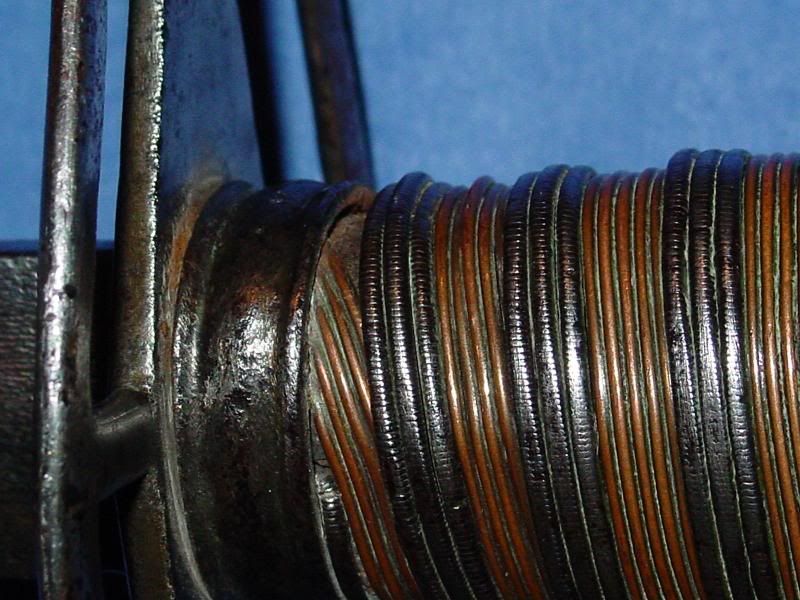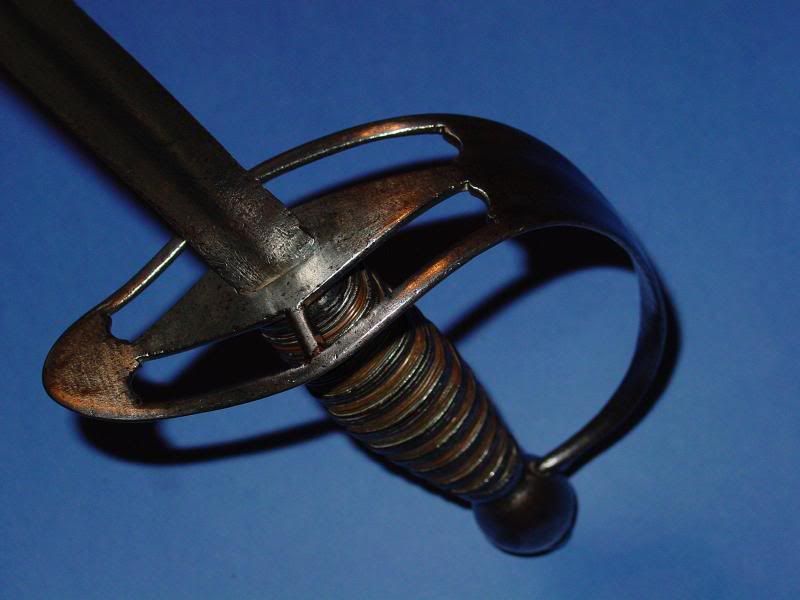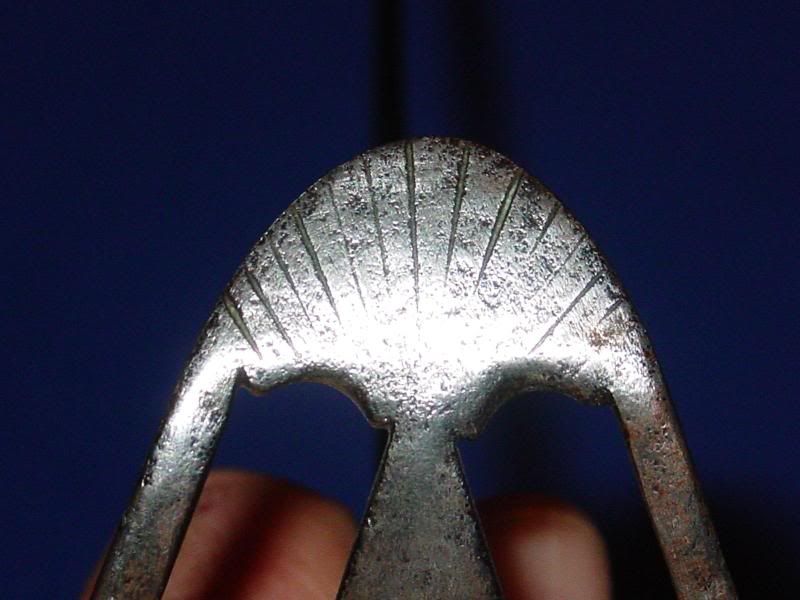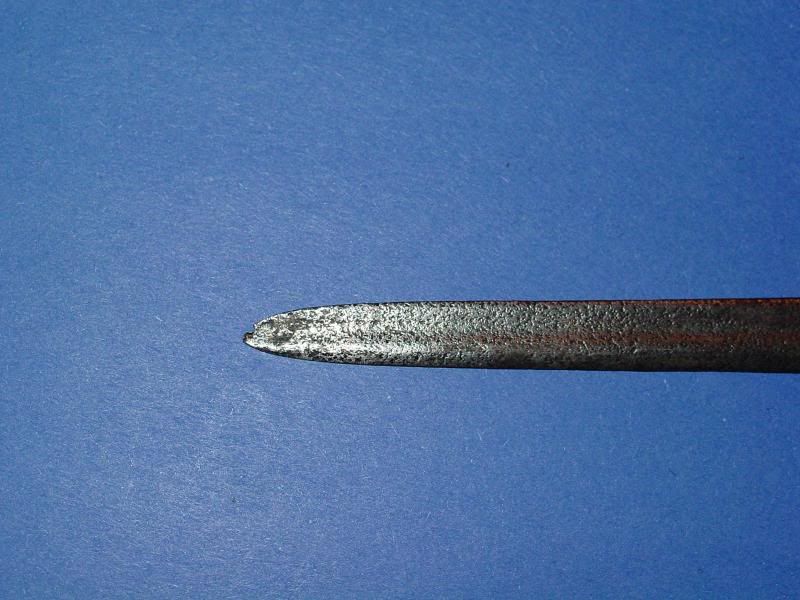
 |
|
|
|
|
#1 |
|
Member
Join Date: Dec 2005
Posts: 164
|
Jim
Here are the new pics of the silver hilt, Thanks for your input        
|
|
|

|
|
|
#2 |
|
Member
Join Date: Dec 2006
Posts: 13
|
Alan - lovely sword, but a steel hilt rather than silver surely?
Paul |
|
|

|
|
|
#3 | |
|
Member
Join Date: Dec 2005
Posts: 164
|
Quote:
Perhaps you or Jim can shed some light on it for me. Paging Jim McDougall 
|
|
|
|

|
|
|
#4 |
|
Member
Join Date: Dec 2006
Posts: 13
|
Alan - to me 'silver hilted' means just that. Pommel, guard etc in silver. I have seen silver-hilted spadroons but I'd be amazed if yours was - not just from the colour (and here I'm referring to the shade of the polished areas) but the pitting visible on the close-up shots of the hilt. Silver goes black and wears smoothly from polishing, I've never seen it pit like iron does. I expect the triple stranded wire wrap over the copper on that beautifully wrapped grip is silver but nothing else.
Still a fine late C18 military officer's sword though. How long is the blade and are there any markings on it? Paul |
|
|

|
|
|
#5 |
|
Member
Join Date: Dec 2005
Posts: 164
|
Thanks Paul
I thought they may just be casting flaws where polishing cannot reach, but they are probably just pits I am still very happy with the purchase and look forward to more detailed information on this sword. Its blade is 30.25 inches long with a 29.25 inch fuller that runs all the way to the tip of the blade.The blade is .75 inch at the ricasso and a little over 3/16ths on the spine at the hilt. There are no visible makers marks Thanks again |
|
|

|
|
|
#6 |
|
Arms Historian
Join Date: Dec 2004
Location: Route 66
Posts: 10,745
|
Hi Alan,
Beautiful patination on this one!!  As noted, I believe this to be a British officers short sabre of 18th c. and a remarkably similar iron hilt to your example is shown in "Swords and Blades of the American Revolution" (George C. Neumann, Stackpole, 1973, p.106, #134.S). This example of these 'four slot' hilts has the same pommel/capstan and gadrooned grip. These apparantly were favored by both British and American officers. It should be remembered that in this period, c.1775-1780, individuals all were essentially considered British. The straight blade on yours is straight, and similar to those seen on similar 'short sabres' c.1760 (Neumann, op.cit. #133.5). In this period through the 1790's some straight bladed swords were termed sabres, and the term 'spadroon' was also applied. I think Paul can probably better elaborate on the application of these terms as his knowledge on military swords of this period is well known. I find the striations at the front of the guard most interesting, as they may represent influences other than simply aesthetic decoration, and it would be interesting to seek others opinions. These may be stylized marks recalling the scallop shell guards of earlier English hangers, or possibly even similar striations seen on Spanish shellguard weapons of this period. From a more esoteric perspective, it should be noted that there are distinct possibilities of Masonic associations and symbolism, and naturally in these times, both Colonial and British officers, typically as gentry, often had such Masonic affiliation. Any ideas guys?  All best regards, Jim |
|
|

|
|
|
#7 |
|
Member
Join Date: Dec 2005
Posts: 164
|
Thank You again Jim for your very detailed and for a lack of a better term
!Awsome! explaination and assesment of this sword. Did you see the briquette style sword from a few posts back and is there any chance you might have info on the makers mark FC Thank You again so much |
|
|

|
 |
| Thread Tools | Search this Thread |
| Display Modes | |
|
|